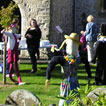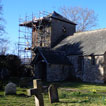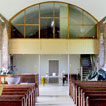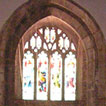New Directions
For many centuries, going to church or chapel was not only a religious duty, but also one of the ways in which people demonstrated that they were part of society and knew their place within it. However, in the 21st century the church has not only to contend with a tide of atheism and agnosticism, but also with the rise of individualism. Whereas Sundays used to be structured to prioritise worship, now there are many conflicting pressures that insist that other things are more important, whether they be sport or shopping or, increasingly, work. As congregations dwindle, paying for the upkeep of our historic churches becomes ever more difficult. Although the percentage of inhabitants who go to church in rural areas is greater than in towns and cities, the absolute numbers are often too small to keep the church open. Churches are costly to run and must be maintained. Download Cadw's guidance booklet Caring for Historic Churches here.
The struggle to keep going can be too great if major building works become necessary. One solution has been to go back to the traditional pattern, where the church was not only the main place of worship for everyone in the parish, but also the hub of the community – the administrative office and social centre, The Victorians disapproved of using the church building for these secular purposes, and did their best to separate them out by providing church halls. However, the trend now is often to sell off the church hall so that the money can be used to keep the church open, and with village shops and pubs increasingly closing down, the church may be left as the only community asset. This has led to some churches getting a new lease of life as community centres.
Another activity that is helping to sustain churches is tourism. Faith tourism is on the rise, whilst many people of no faith still like to visit churches to appreciate their architecture and historic fittings.
In spite of everything, there is still a steady stream of churches that have become redundant. Of course, this has always happened – look at our pages on Lost Churches, some of which fell into ruin centuries ago because the populations moved elsewhere. The ones that were left have usually survived above ground because new uses were found for them, normally as agricultural buildings. The same applies today, though the new uses are more likely to be as houses or business premises. A few lucky buildings are adopted by one of the conservation societies that specialise in looking after them: the ones active in Wales are the Friends of Friendless Churches for Anglican churches and Addoldai for other denominations, though funds are limited and they can only afford to take on the most important.





